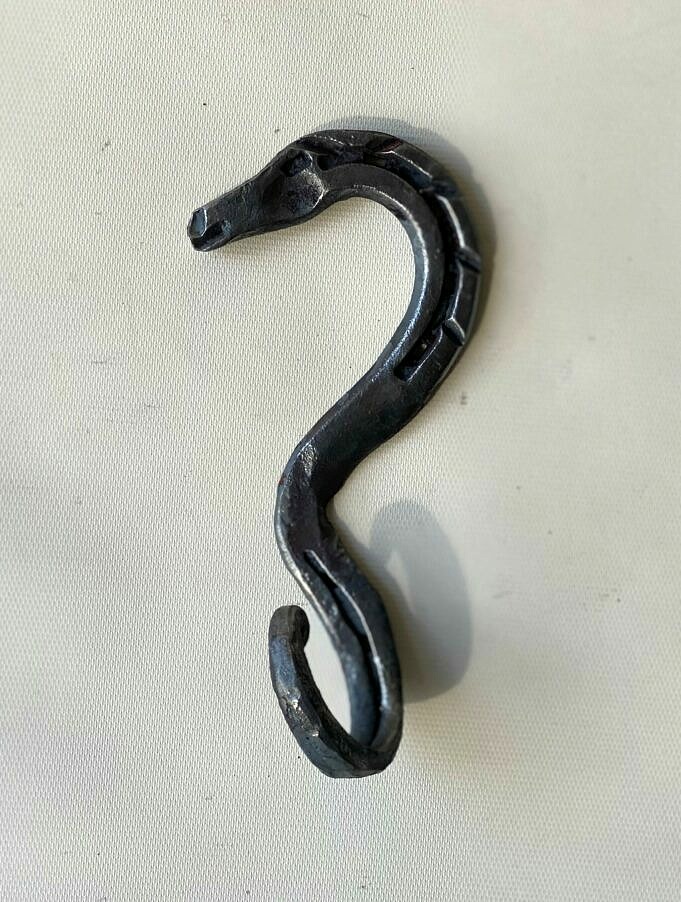For woodworkers today, using traditional joinery is an expression of skill and nostalgia, a demonstration of the mastery of techniques practiced every day two centuries earlier. This was a time when furniture-making in America reached a peak that is yet to be surpassed. Dovetails and box joints were the state-of-the art technology for keeping two pieces of wooden together. More than anything, it was the well-made joint that kept furniture from falling apart. In fact, use of the dovetail allowed cabinet design to shift from clunky low chests to vaulting highboys, tall chests supported by delicate cabriole legs.
There were no high-strength glues. There were no screws. There were no nails, but they could be bought at a cost that made hand-cut joints economically viable. Hardware, as we know it, didnt exist at all, not even in a corner of the general store.
Instead, there were blacksmiths. Thousands of them in cities, towns and villages throughout the colonies. A survey of Philadelphia in 1788 listed 214 blacksmiths. A census of Lancaster County, Penn., listed 25 blacksmiths and whitesmiths, seven gunsmiths and seven nail makers.
In the pre-industrial age, you could order anything from iron (steel was only used sparingly). It would be made by hand in a forge and shaped on an anvil. And yes, some smiths fitted horseshoes, but these were a minority and were considered near the bottom rung.
Hardware was expensive. To begin with, raw iron stock from which the work was wrought, was pricey. You also have to consider the labor involved in making each piece, which often required heating, re-heating and working on the anvil. Blacksmiths took pride in their work. Blacksmiths were proud of their work. It was considered a sign of poor workmanship. They left hammer marks after the Industrial Age to indicate that the work was handcrafted. A whitesmith, so called because his work was finished as bright metal, not black, filed and finished all his work to a flawless surface.
Some blacksmiths made nails. One skilled blacksmith could make 1,000 nails per day. Thats about a half minute to make each one, which required cutting 1/10 cm-square barstock to length, heating, pointing one end by hammering, then nicking the other end where the appropriate-sized head was formed there.
Blacksmiths also made hinges, latches and locks. They made many of the edge tools for cabinetmakers. They also made fireplace tools, shears, iron rims to wagon wheels, chain, ship fittings and weapons, as well as iron rims for wagon tires, ships, chains, and knives.
The Industrial Age revolutionized the way work was done, and the ring of anvil fell. Except for horseshoeing, blacksmiths are as rare today as they were in the past. The Artist-Blacksmiths Association of North America is making it easier for blacksmiths to produce more artistic work.
Marsha Nelson is a blacksmith from Cold Spring, Ky., who is schooled in the traditional ways of smithing. She creates traditional furniture hardware and household furniture from the late 17th to early 18th century. Her work is available at an Ohio antique furniture showroom and reproduction shop.
Intrigued about what it must have been like to work with a blacksmith, I visited Marshas shop one day when she was making a traditional hinge called a rat-tail, a popular hinge in the 1700s.
She explained that her technique is 18th century and was learned 15 years ago during her apprenticeship at Cooperstown’s Farmers Museum.
To start the process, Marsha first makes the barrel part of the hinge using inch-wide flat stock. She places the mild steel in a jig thats secured in a vise. The flat stock is then cold bent in the vise to a 90-degree angle. The barrel is then formed by wrapping the stock around the jig.
Product Recommendations
These are the tools and supplies we use every day in our shop. We may receive a commission from sales referred by our links; however, we have carefully selected these products for their usefulness and quality.



